
Celebrating National Acorn Squash Day is a fantastic chance to improve your fall garden! By selecting tasty varieties like ‘Table Queen’ and ‘Green Acorn,’ you can mix different flavors and colors in your garden. Don’t forget that planting certain plants together—known as companion planting—can help your veggies grow better and make the soil healthier.
Planning your garden wisely is the key to a great harvest. With just a little effort and thoughtful choices, you can enjoy a bountiful supply of acorn squash right from your backyard. Get ready to discover exciting tips that will help you grow the best acorn squash this season!
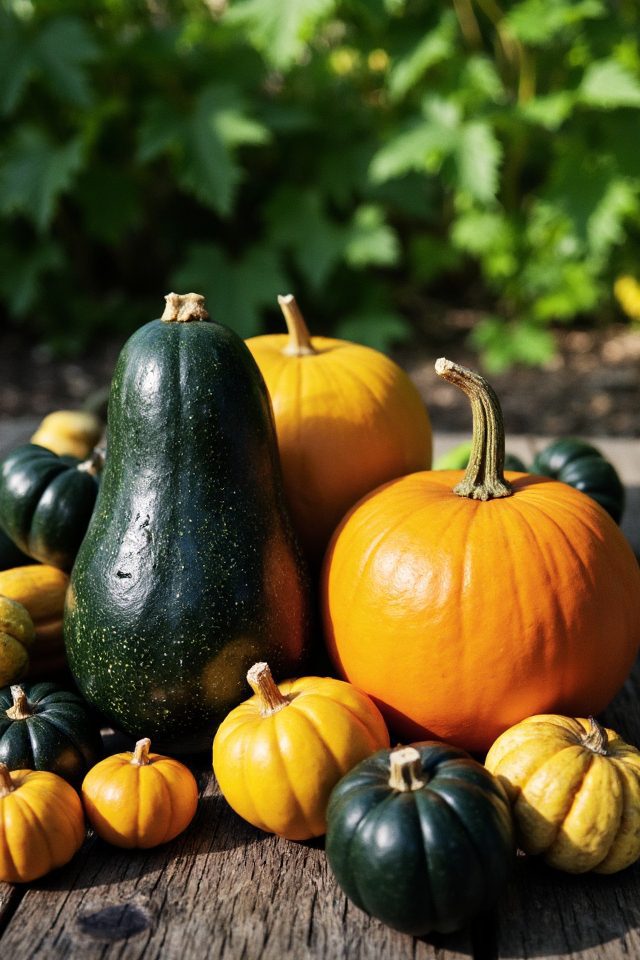
When selecting the right acorn squash variety for your garden, consider the characteristics that suit your taste and growing conditions.
Popular choices include ‘Table Queen,’ known for its sweet flavor and creamy texture, and ‘Green Acorn,’ which is slightly drier yet equally delicious.
Some varieties may offer unique colors or sizes, so explore options that align with your culinary preferences.
Additionally, assess seed availability and your local climate to guarantee a successful harvest.
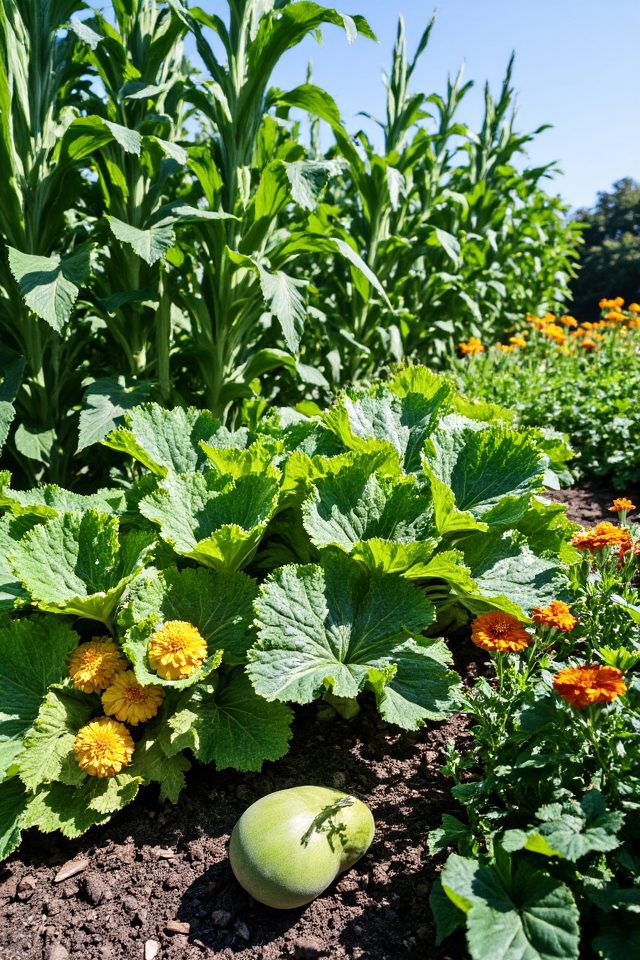
Companion planting with acorn squash can enhance growth and protect against pests.
Ideal companions include corn, which provides natural support for the squash vines, and beans, which add nitrogen to the soil.
For pest control, planting marigolds nearby can deter harmful insects.
Additionally, growing herbs like basil and oregano can improve flavor while attracting beneficial pollinators.
This strategic planting not only maximizes space but also creates a thriving garden ecosystem.
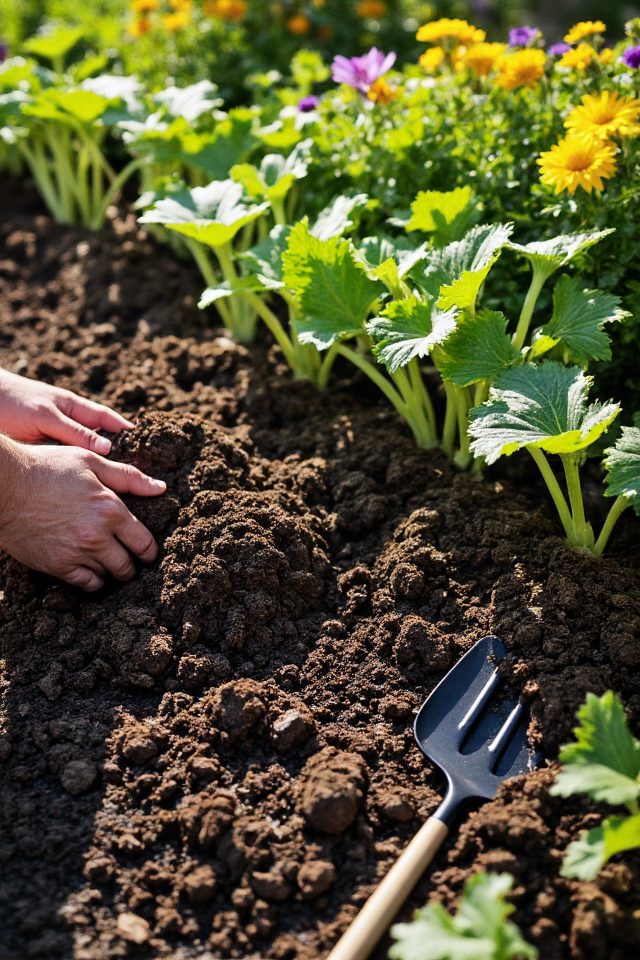
Ideal soil preparation for acorn squash is essential for a healthy harvest.
Start by selecting a sunny location with well-draining soil enriched with organic matter, such as compost or well-rotted manure. Aim for a soil pH between 6.0 and 7.5.
Before planting, till the soil to a depth of at least 12 inches to break up compacted layers and promote root growth. Adding a balanced fertilizer can also boost nutrient availability, ensuring your acorn squash plants thrive.
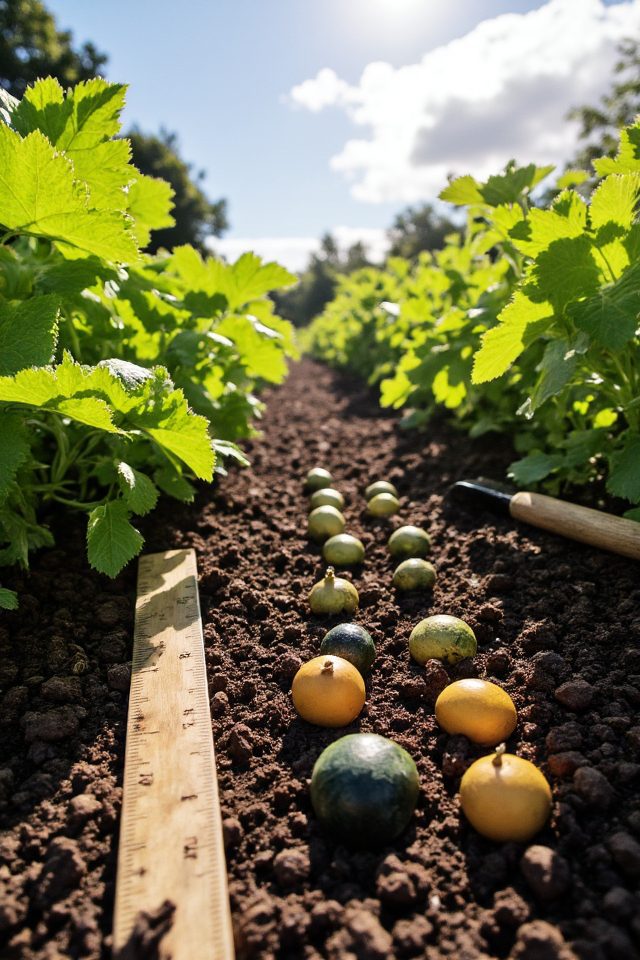
Acorn squash seeds should be planted in the spring after all danger of frost has passed, typically when soil temperatures reach at least 60°F (15°C). In most regions, this is around mid to late May.
To guarantee healthy growth, sow seeds directly into well-drained, warm soil, ideally 1 inch deep and spaced about 2 feet apart in a sunny location.
Starting seeds indoors a few weeks earlier can also give you a jump on the growing season.
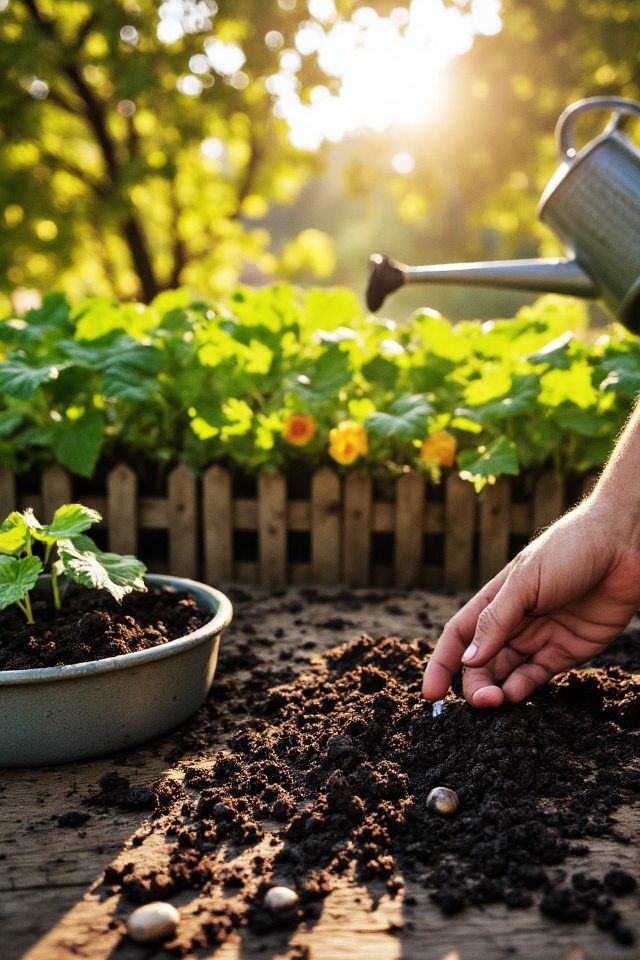
Starting acorn squash from seeds is an easy and rewarding process.
Begin by choosing a sunny location with well-drained soil and a pH of 6.0 to 6.8. Sow the seeds directly into the soil after the last frost, planting them about 1 inch deep and 2 to 3 feet apart.
Water them thoroughly and maintain consistent moisture. With proper care and sunlight, you can expect to see seedlings emerge in a week or two, leading to a fruitful harvest!
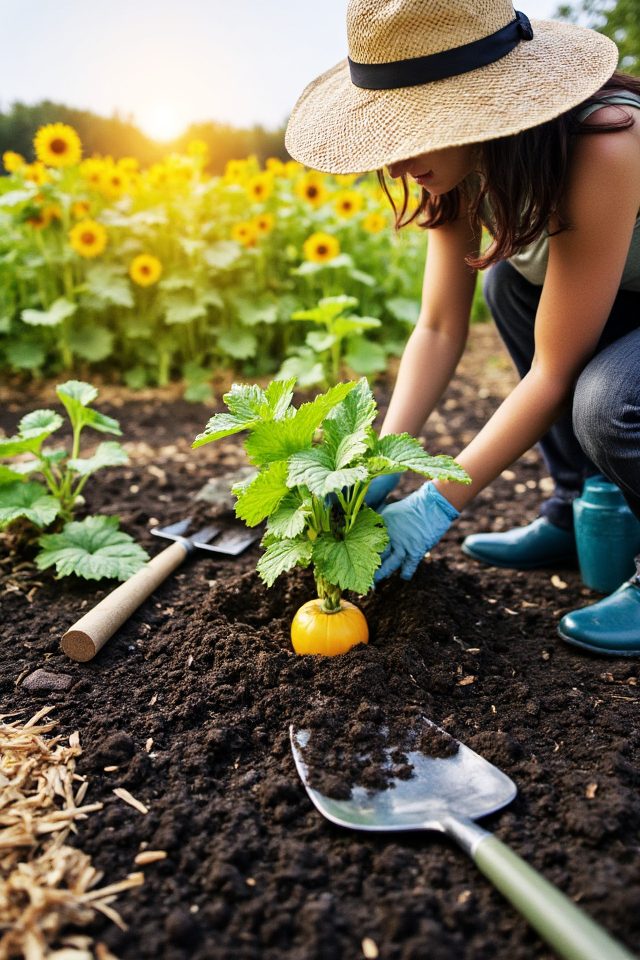
Transplanting acorn squash seedlings requires careful attention to guarantee successful growth.
Begin by hardening off your seedlings a week before transplanting, gradually exposing them to outdoor conditions. Choose a sunny location with well-drained soil and space the seedlings about 2 feet apart.
Water them thoroughly before transplanting and gently disturb the root ball to encourage growth.
After planting, apply mulch to retain soil moisture and protect against weeds, guaranteeing a healthy start for your acorn squash plants.
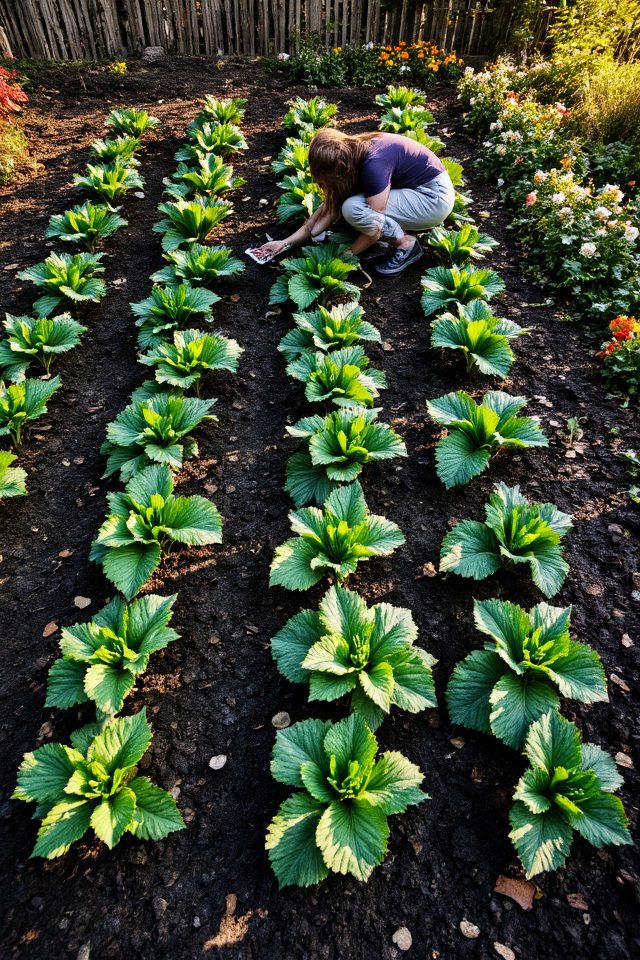
Proper spacing for acorn squash plants is vital for ensuring ideal growth and yield.
Ideally, these plants should be spaced about 2 to 3 feet apart when planted in rows, allowing ample room for their sprawling vines.
If you’re using a raised bed, spacing them 18 to 24 inches apart can work well, helping to maintain air circulation and reduce the risk of disease.
Adequate spacing also facilitates easier access for harvesting and care.
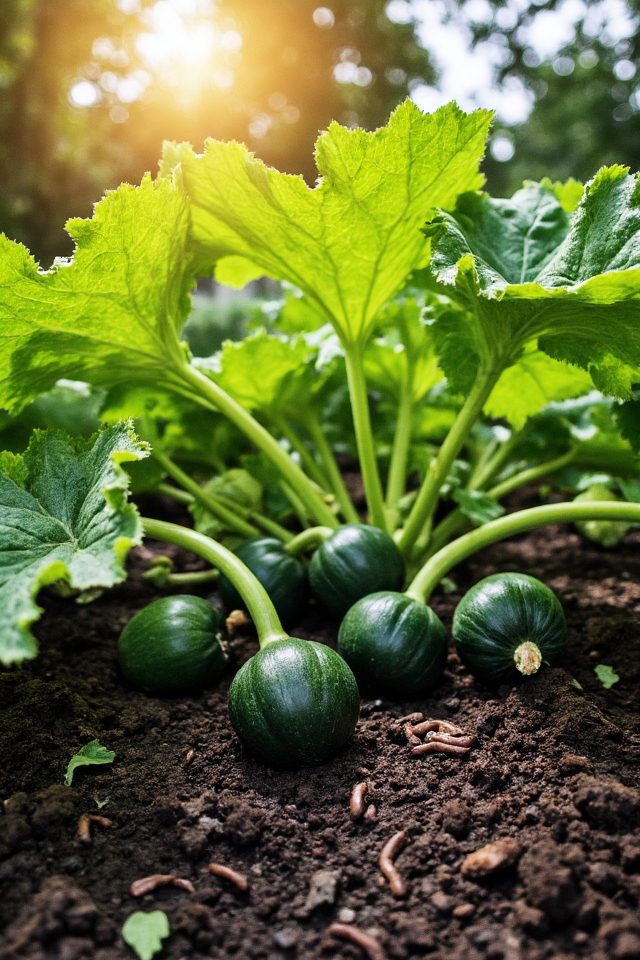
To grow healthy acorn squash, it’s essential to provide vital nutrients that support its development.
Key nutrients include nitrogen for vigorous foliage, phosphorus for root and flower production, and potassium for overall plant health and fruit quality.
Organic amendments like compost and well-rotted manure can enrich the soil, while balanced fertilizers guarantee the plants receive the necessary micronutrients.
Regular soil testing will help determine specific nutrient needs, promoting robust growth and a bountiful harvest.
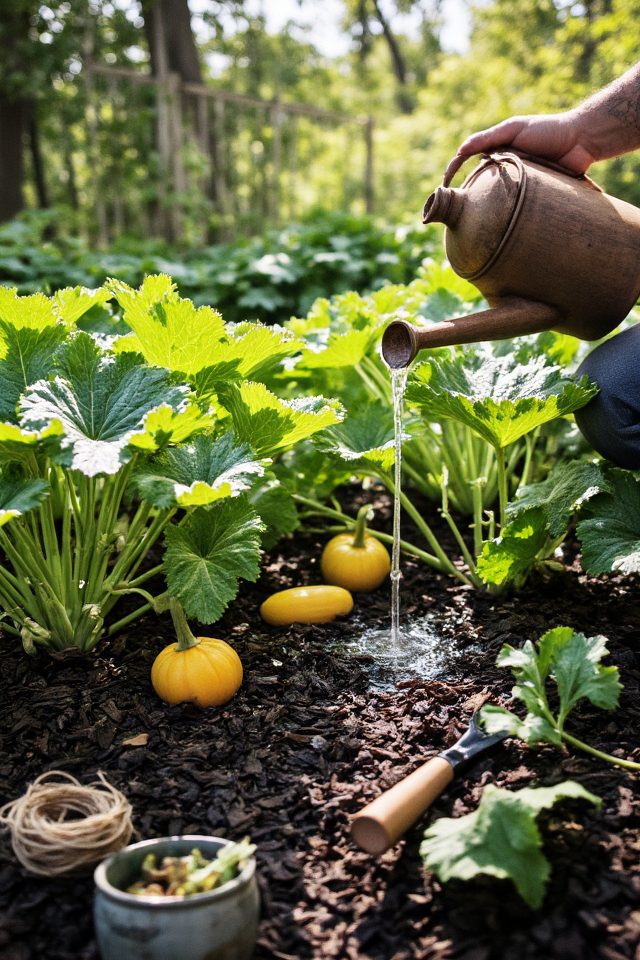
Effective watering techniques for acorn squash are essential for promoting healthy growth and maximum yield.
Deep watering is recommended, ensuring that moisture reaches the root zone—aim for about 1 to 1.5 inches of water per week, depending on rainfall.
Water early in the morning to minimize evaporation and fungal diseases.
Use mulch around the plants to retain soil moisture and reduce weeds, helping to maintain an ideal growing environment for your squash.
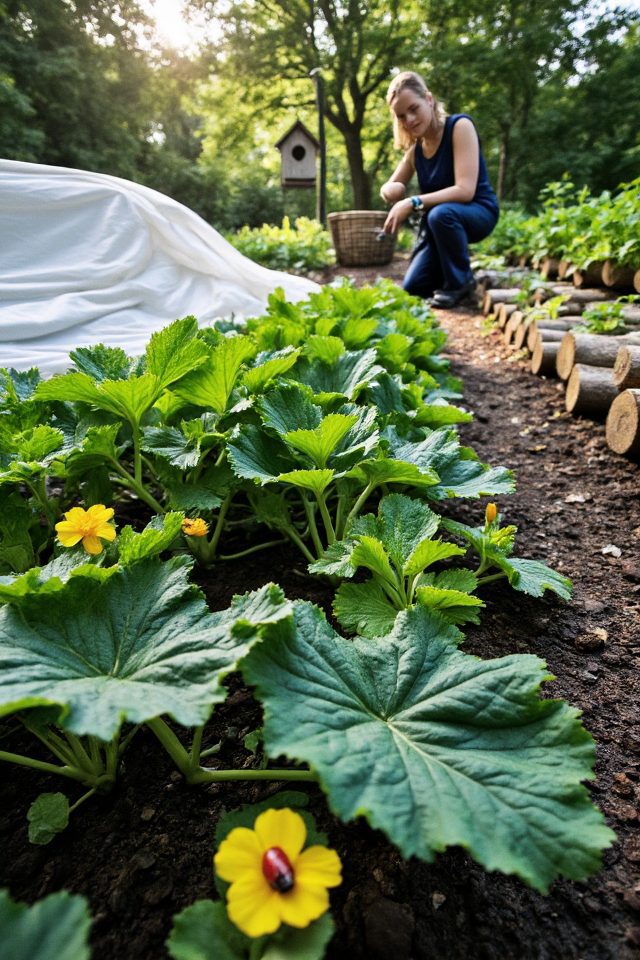
Effective pest management is essential for healthy acorn squash plants.
Employing a combination of cultural practices, biological controls, and organic pesticides can help keep pests at bay. Rotate crops annually to disrupt pest life cycles, and introduce beneficial insects like ladybugs to control aphid populations.
Additionally, using floating row covers can protect young plants from squash vine borers and beetles, while regular monitoring allows for early detection and intervention, ensuring robust growth and bountiful harvests.
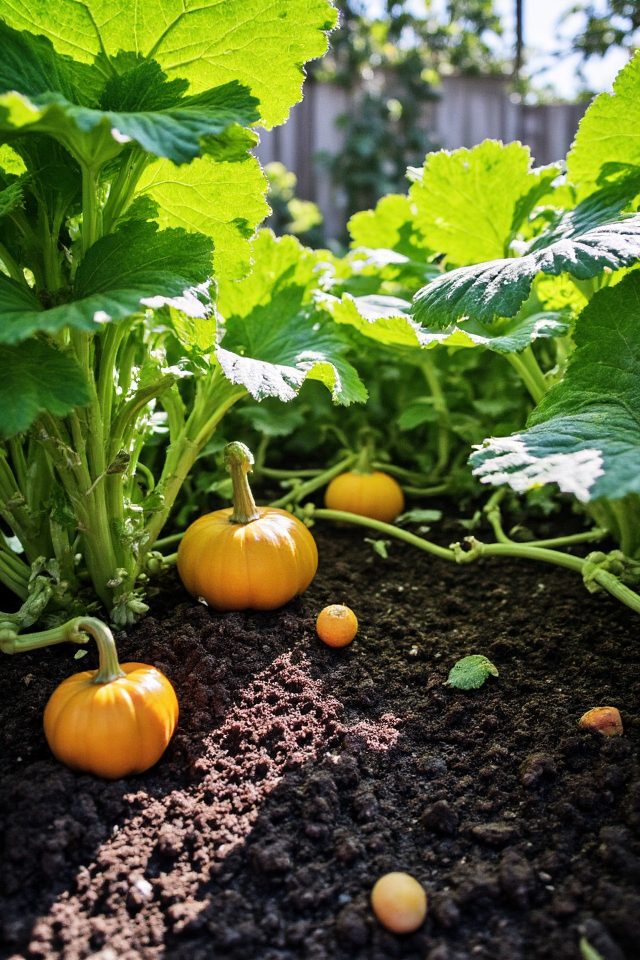
Using organic fertilizers can greatly enhance the growth of acorn squash by providing essential nutrients without the harmful effects of synthetic chemicals.
Compost, well-rotted manure, and organic blends rich in nitrogen and potassium can improve soil structure and promote healthy root development.
Additionally, applying bone meal or fish emulsion during planting encourages robust vine growth and abundant fruit set.
Regular organic feeds throughout the growing season help sustain plant health and yield, contributing to a thriving harvest.
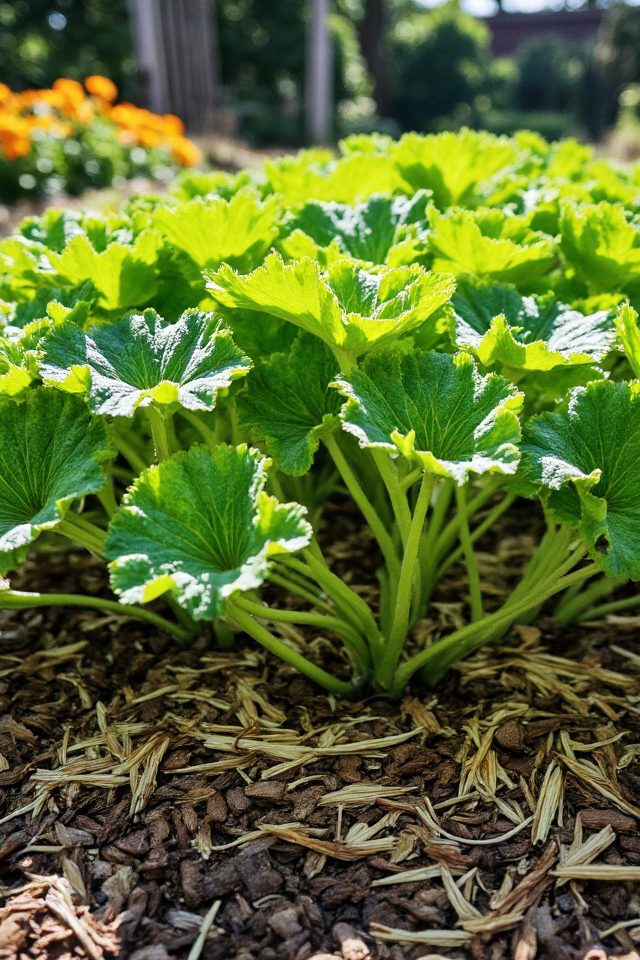
Mulching is an essential practice for retaining moisture in acorn squash plants, especially during dry spells. Applying a layer of organic mulch—such as straw, wood chips, or grass clippings—around the base of the plants helps to reduce evaporation and maintain consistent soil moisture levels.
This not only promotes healthy growth but also suppresses weeds that compete for nutrients and water. Additionally, as the mulch breaks down, it adds valuable organic matter to the soil, enhancing its fertility.
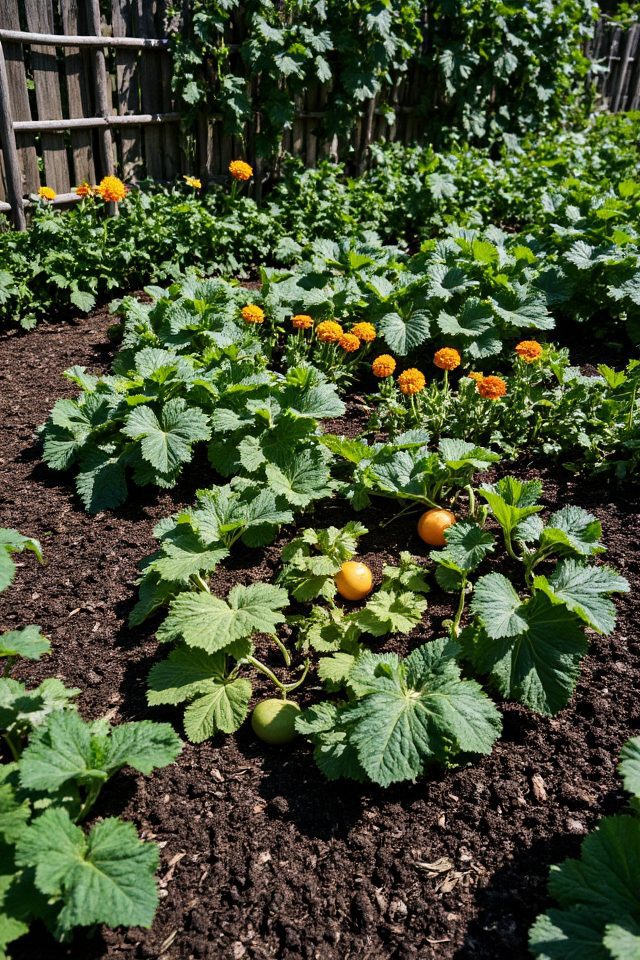
Creative planting patterns can elevate your garden’s aesthetic while optimizing space for acorn squash. Consider using a spiral layout, which not only saves room but also promotes air circulation and sunlight exposure for each plant.
Alternatively, try a checkerboard pattern interspersed with companion plants like marigolds or herbs, enhancing biodiversity and pest control.
Vertical gardening techniques, such as trellising, can also be employed to maximize vertical space, allowing for a visually striking and productive garden.
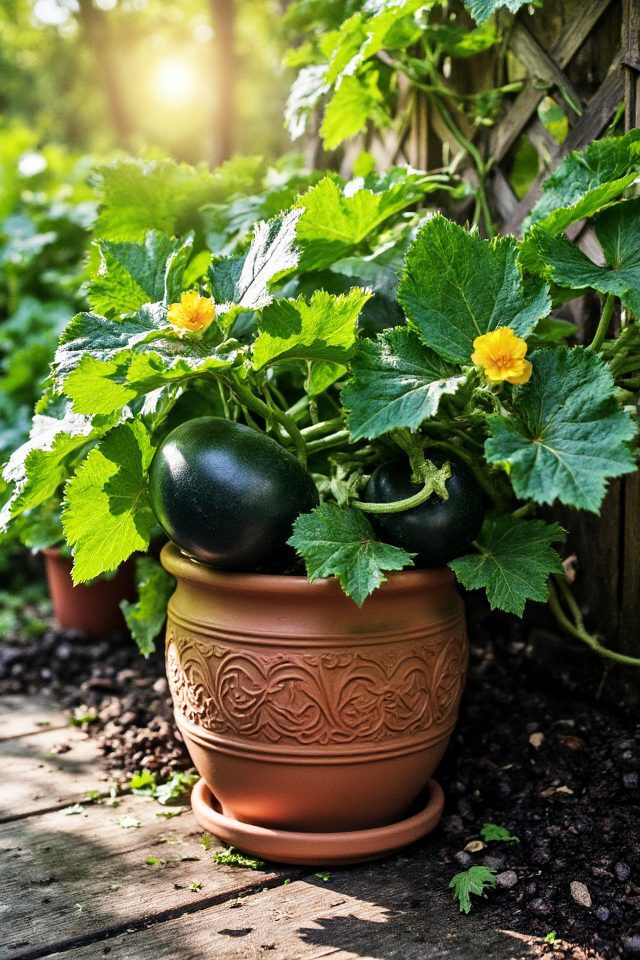
Growing acorn squash in containers is an excellent option for gardeners with limited space.
Choose a large pot, at least 5-10 gallons, and fill it with nutrient-rich potting soil. Guarantee proper drainage by adding holes in the bottom.
Position the container in a sunny location, as acorn squash thrives in full sunlight. Water regularly to keep the soil consistently moist, and provide support, such as a trellis, if planting vining varieties to maximize vertical space.
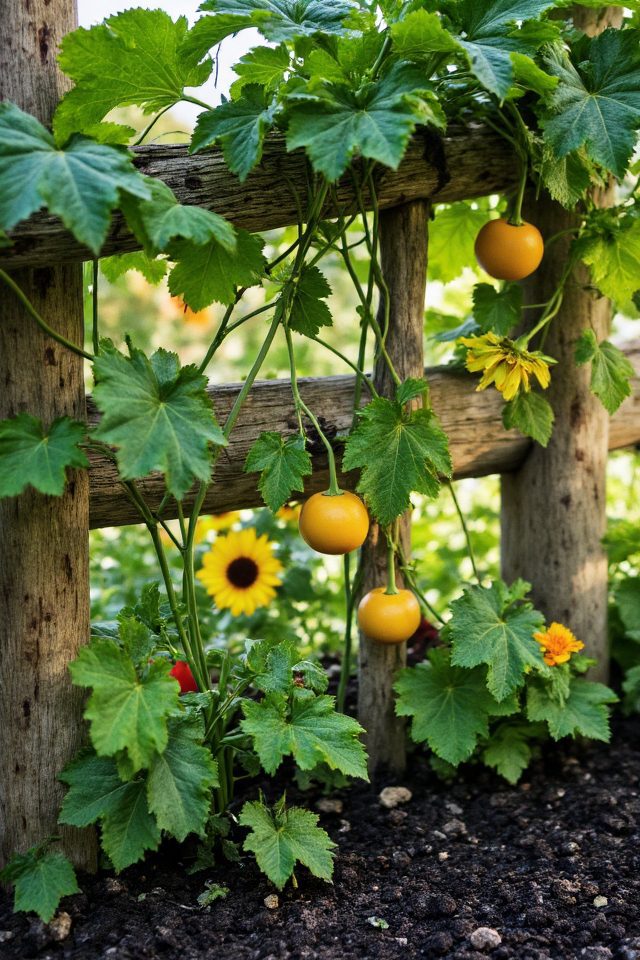
Vertical gardening techniques can be an excellent way to grow acorn squash while maximizing space and promoting healthy plant growth.
Utilizing trellises, arbors, or even A-frame supports, you can train the vines to climb upward instead of spreading out on the ground. This method not only saves space but also improves air circulation and sun exposure, reducing the risk of rot and pests.
Additionally, the fruits can hang freely, making harvesting easier and preventing soil-borne diseases.
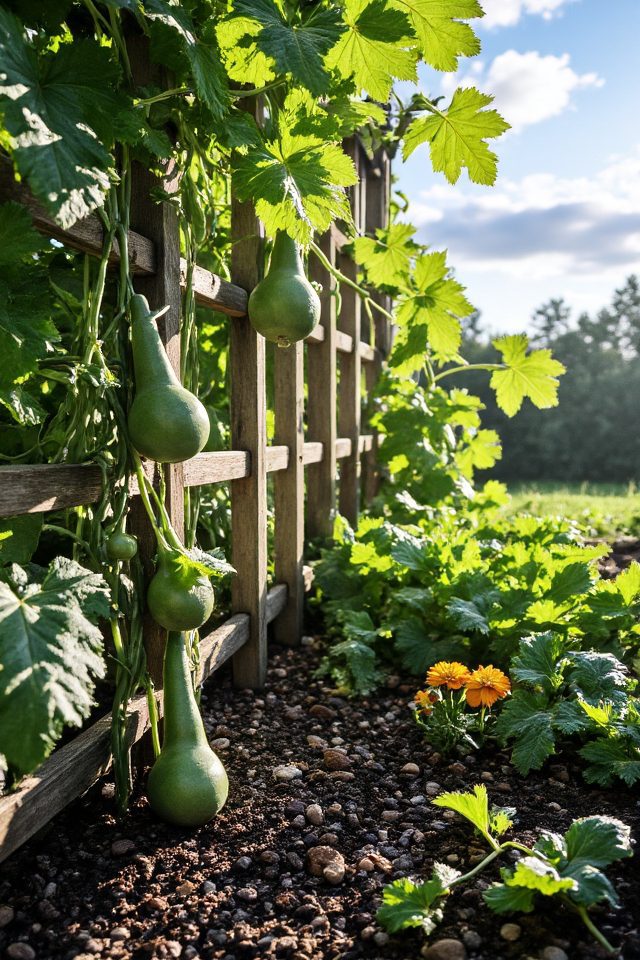
Utilizing trellises for acorn squash is an excellent way to save space in your garden while promoting healthier growth. By training the vines upward, you maximize vertical space and guarantee better air circulation around the plants.
This not only reduces the risk of fungal diseases but also makes harvesting easier. Additionally, trellising allows for more sunlight to reach each fruit, enhancing their development and improving yield.
Incorporate sturdy supports to handle the weight of the mature squash.
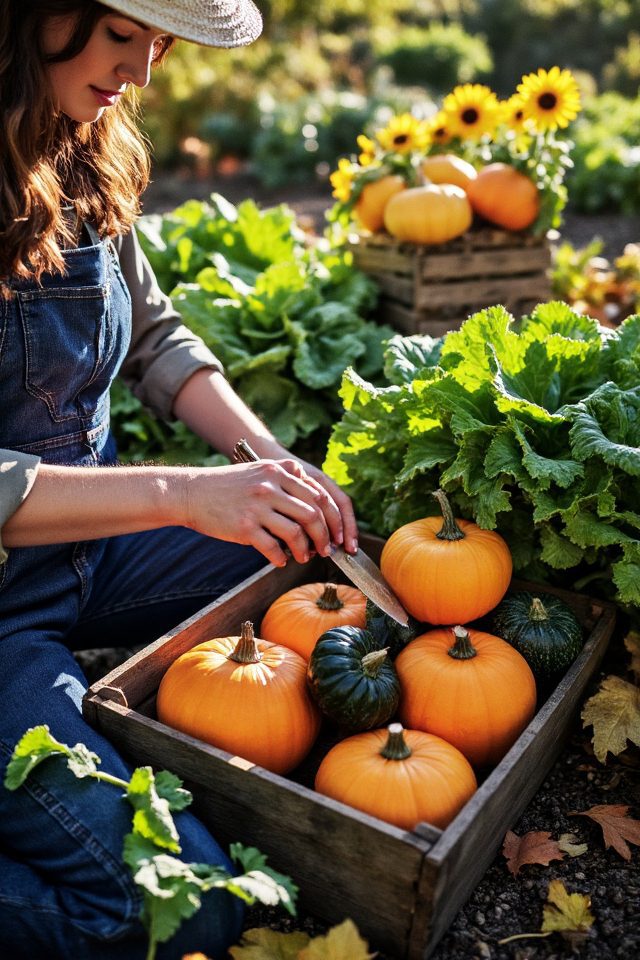
To achieve ideal flavor in acorn squash, timing your harvest is essential. Wait until the skin is hard and the color is a deep, rich green or orange, depending on the variety.
Harvest acorn squash with a sharp knife, cutting a few inches of stem to avoid damage. It’s best to pick them before the first frost, as cooler temperatures can decrease sweetness.
Store them in a cool, dry place for enhanced flavor development.
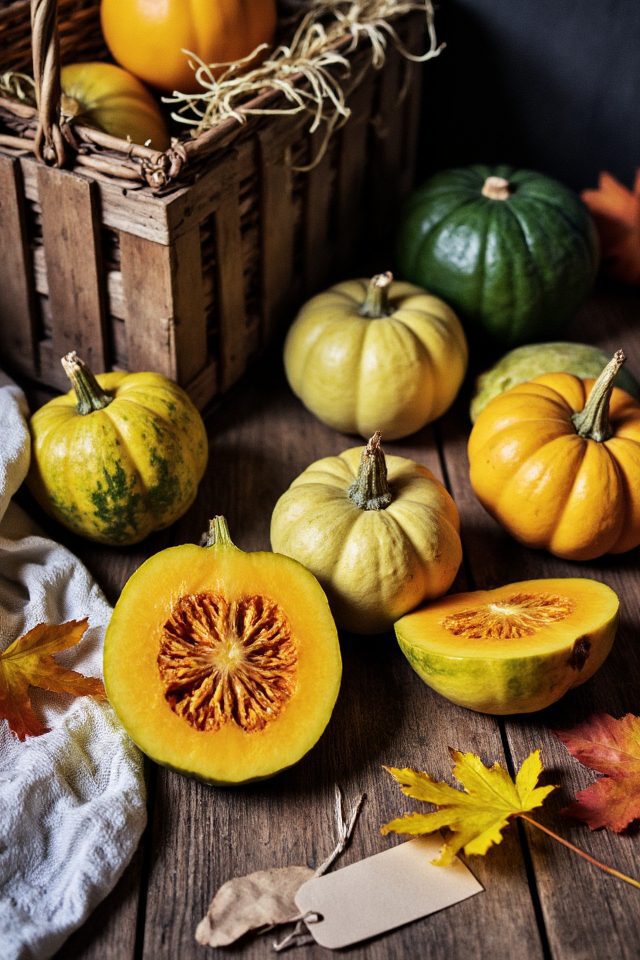
Storing acorn squash for winter use requires careful handling to preserve its flavor and texture.
Choose mature squashes with firm, blemish-free skin and allow them to cure in a warm, dry place for about two weeks.
Once cured, store them in a cool, dark location, ideally at temperatures between 50-60°F (10-15°C).
Regularly check for signs of spoilage and enjoy your harvested acorn squash throughout the winter months in various delicious recipes!

Acorn squash is a versatile and nutritious ingredient perfect for seasonal recipes. Its sweet, nutty flavor pairs well with a variety of ingredients, making it ideal for soups, casseroles, and roasted dishes.
Try stuffing it with quinoa, herbs, and cheese for a hearty meal, or slice it into wedges and roast with maple syrup for a delightful side dish.
With its vibrant color and unique shape, acorn squash adds visual appeal to any autumn platter. Enjoy the bounty of the season with these delicious recipes!

Acorn squash is a versatile ingredient for meal prepping, offering a delicious and nutritious addition to various dishes. Its sweet, nutty flavor pairs well with both savory and sweet components, making it perfect for soups, casseroles, and grain bowls.
Roasting or steaming acorn squash enhances its natural taste, and its firm texture holds up well in the fridge, allowing for easy reheating. Incorporate it into salads or as a side dish to maximize flavor and nutritional benefits throughout the week.
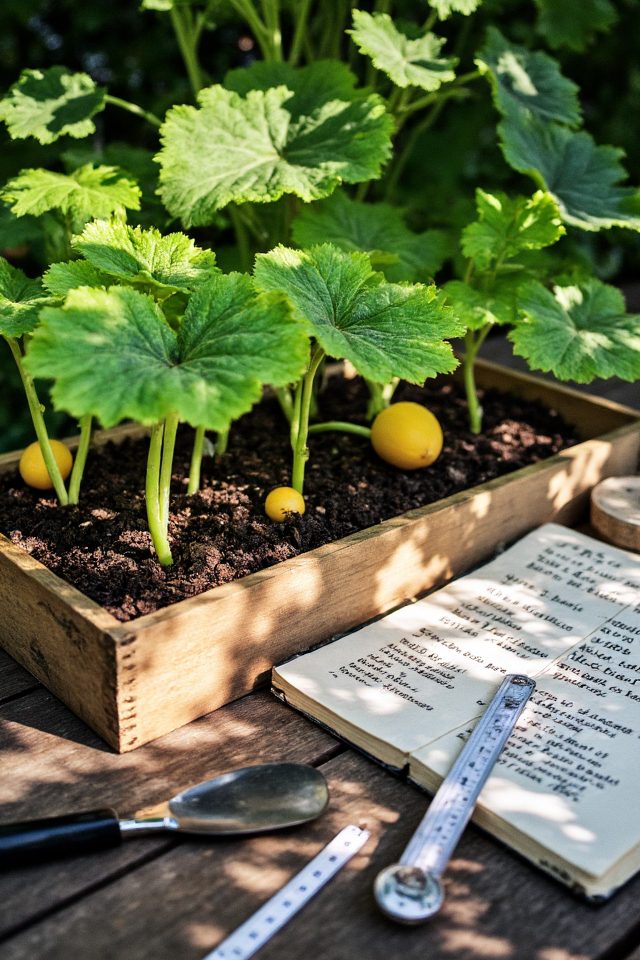
When planning your succession planting schedule for acorn squash, consider your local frost dates and the growing season length.
Start by planting your first batch of seeds in late spring, then follow up with additional plantings every two to three weeks to guarantee a continuous harvest.
Keep in mind that acorn squash typically takes 80-90 days to mature, so stagger your planting accordingly to enjoy fresh squash throughout the fall.
Remember to monitor soil temperature and moisture for best germination.
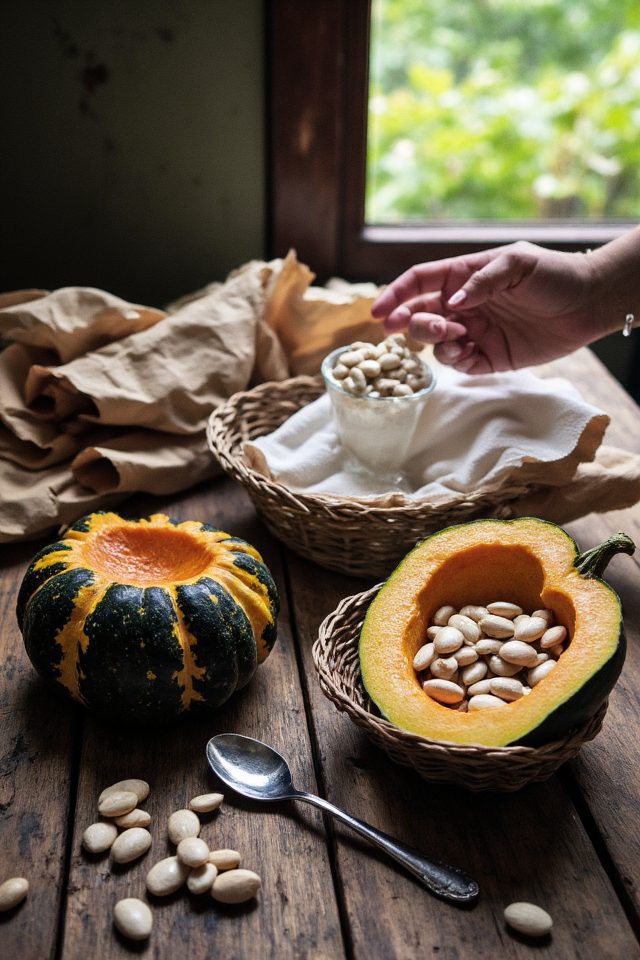
Saving seeds from your acorn squash is a cost-effective way to guarantee a bountiful harvest for the next season.
To start, choose the healthiest, fully matured squash from your garden.
After harvesting, scoop out the seeds and rinse them to remove any pulp.
Spread the seeds out on a paper towel to dry for a few days, then store them in a labeled, airtight container in a cool, dark place.
Properly saved seeds can remain viable for several years!
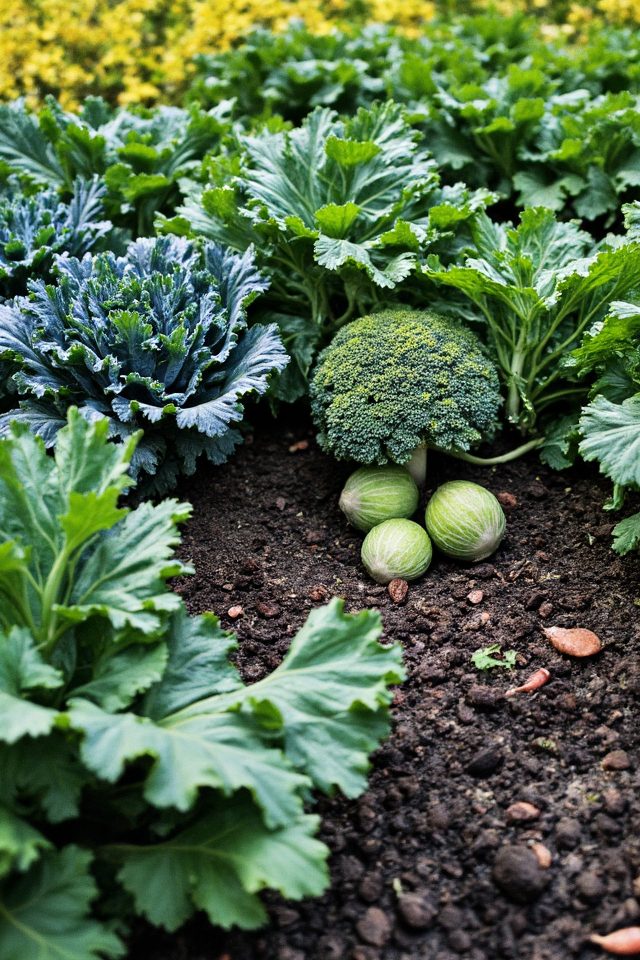
As you plan your fall garden, consider planting other vegetables that thrive in cooler weather alongside acorn squash.
Favorites like broccoli, kale, and Brussels sprouts not only complement squash in meals but also enhance your garden’s diversity.
Root vegetables, such as carrots and turnips, benefit from the same growing conditions.
As you celebrate National Acorn Squash Day, embrace these planting ideas to create a vibrant vegetable garden. By choosing the right varieties, incorporating companion plants, and mastering soil preparation techniques, you’ll pave the way for a bountiful fall harvest. Don’t forget to explore delicious meal prep options with your fresh squash and save seeds for future planting. Enjoy the satisfaction of nurturing your garden and savoring the rich flavors of your homegrown acorn squash! Happy gardening!

Don't let aphids, slugs, and caterpillars ruin another plant. Take back control with simple, natural methods that actually work.